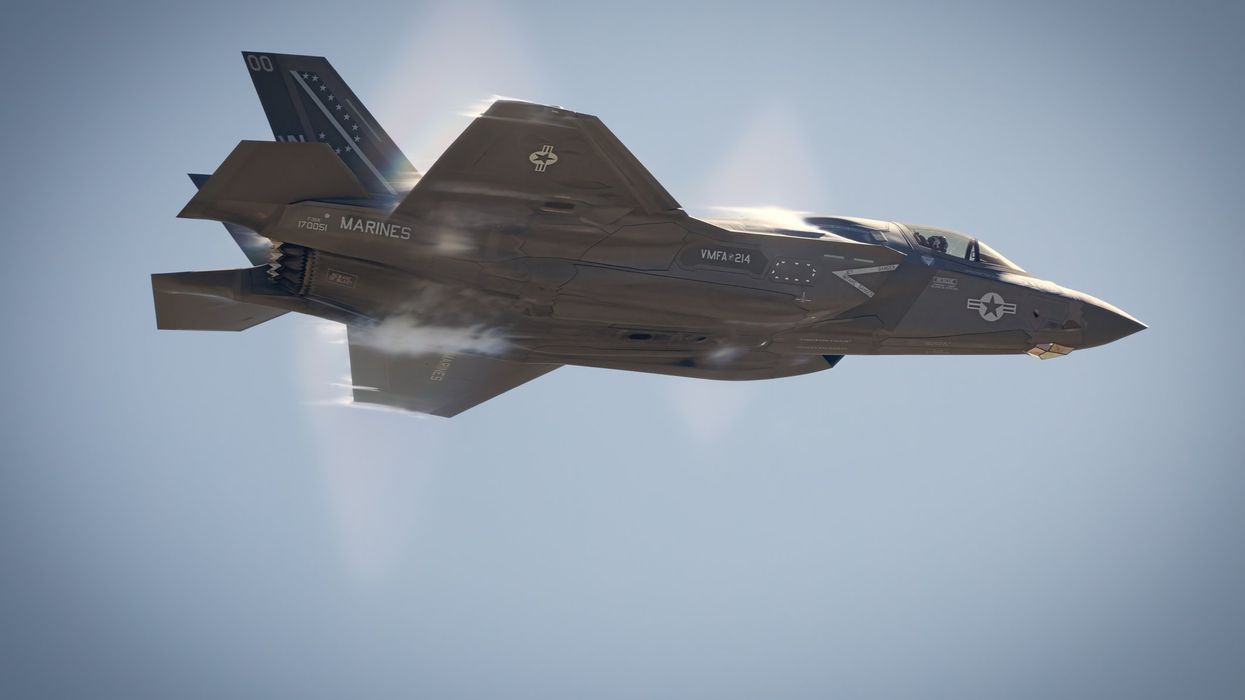
Bill Chizek/Getty Images

America’s military posture was designed with an effective F-35 in mind, and we are never going to have one. Let’s put more money into existing programs that work.
In Washington, D.C., lawmakers have managed to push their arguments about funding the government into next year. Under the latest agreement, federal spending will remain at last year’s level until January. After that, lawmakers would need to pass two different spending bills. They may increase spending, decrease it, or leave it at the same level.
One key question in early 2024 will focus on how much to spend on defense. Influential voices are speaking up to demand more. As Politico reported, “Sen. Lindsey Graham (R-S.C.), meanwhile, remains adamant that Pentagon spending be increased above the McCarthy-Biden deal, telling Playbook that ‘the topline number is not sufficient for the threats we face.’”
The military has already spent too much on the F-35. Next year, it should start down a better path by investing in more effective systems.
Graham is not alone in calling for an increase in defense spending next year.
But lawmakers don’t necessarily need to appropriate more money. They could also make more money available for effective programs by reducing spending on ineffective military programs. They should begin with the F-35.
The F-35 Lightning is a combination fighter/bomber/stealth jet that was supposed to replace several other types of military aircraft. It was supposed to be able to evade detection, take off from and land on aircraft carriers, and support troops deployed in the field.
It has fallen short on just about every measure.
“The jet has never reached its full operational capability and already needs updates and tweaks, including a new engine,” CNN reports.
Indeed, “all three flavors of the jet — the Air Force’s -A model, the Marine Corps’ -B model, and the Navy’s and Marines’ -C model — were at least 3 years late entering service, and even today, there are problems with the jet’s readiness and high cost per flight hour,” Popular Mechanics explained.
In 2018, the New York Times broke that cost down: “Flying an F-35A cost about $44,000 per hour on average, about double the cost of operating the Navy’s Boeing F/A-18E/F Super Hornet.” That’s twice as much for a less effective jet.
The numbers around the F-35 keep getting worse every year. The F-35 “remains DOD’s most expensive weapon system program. It is estimated to cost over $1.7 trillion to buy, operate, and sustain,” the Government Accountability Office reported in April.
The GAO is the government’s accounting department. It does not set policy, but it crunches the numbers for policymakers. In another report, the GAO found that “the F-35 fleet mission capable rate — the percentage of time the aircraft can perform one of its tasked missions — was about 55 percent in March 2023, far below program goals. This performance was due in part to challenges with depot and organizational maintenance.”
In other words, there aren’t enough places to park the planes that don’t work, there aren’t enough parts to fix the planes that don’t work, and there aren’t enough technicians trained to work on those planes that don’t work.
It seems impossible to fix the F-35.
Even the company that makes new planes is struggling to do so. “Lockheed Martin Corp. continues to produce F-35 jets with flaws discovered after the fighter jets are delivered to US military units, according to the Pentagon’s contracts management agency,” Bloomberg reported this year. “Four F-35Bs at a Marine unit at Cherry Point, North Carolina, have been repaired on-site since August by Lockheed technicians to correct ‘Category 1’ deficiencies, according to people familiar with the problems, including a defense official. Such flaws affect flight readiness but aren’t seen as endangering pilot safety.”
Of course, such flaws endanger all of us, because our military posture was designed with an effective F-35 in mind, and we are never going to have one.
The Pentagon is already putting more money into existing programs that work. That means more for planes like the Navy Super Hornet. This approach makes sense. The military has already spent too much on the F-35. Next year, it should start down a better path by investing in more effective systems and shelving the F-35.
Mark Anthony